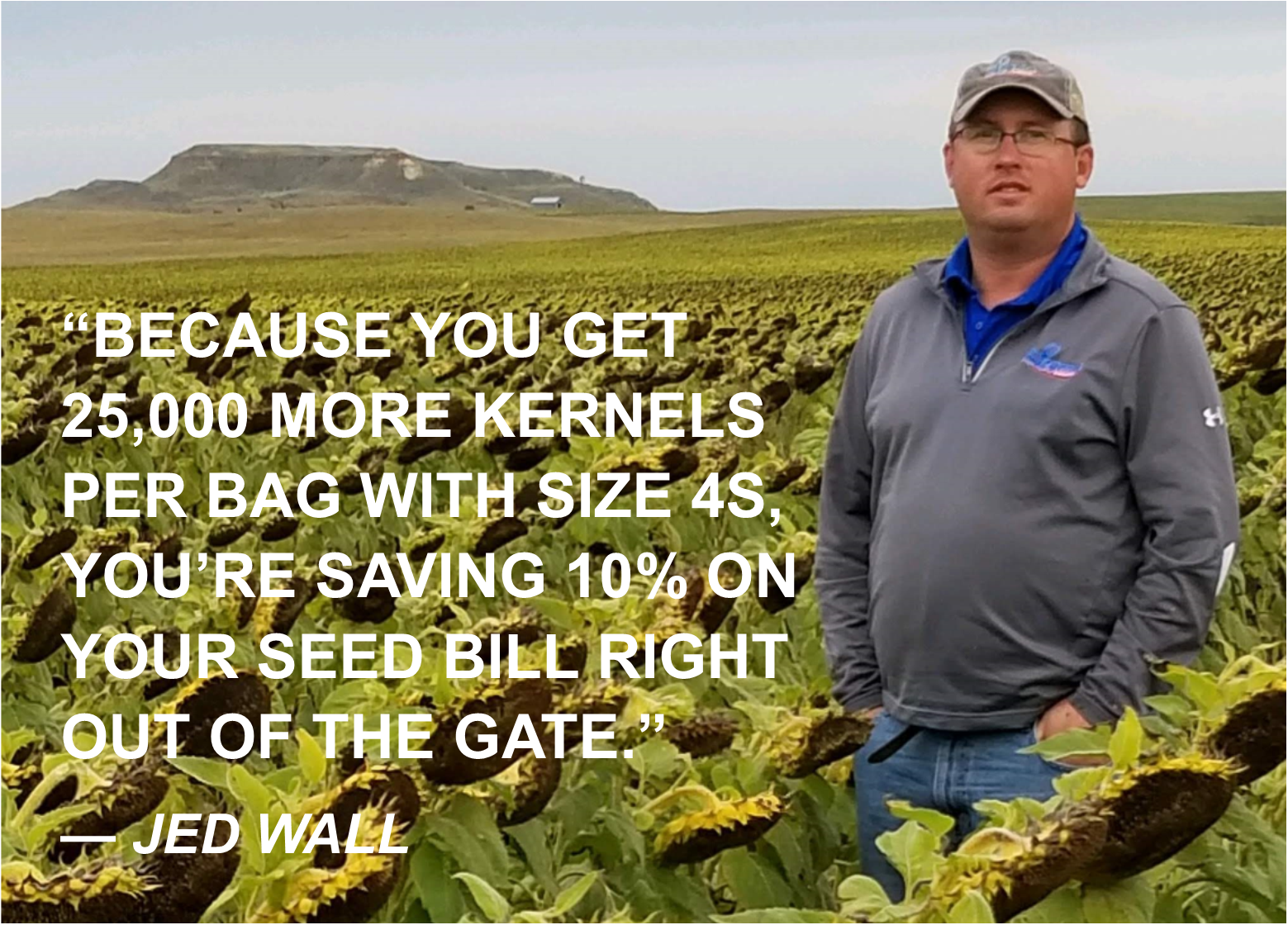Using row planters or air seeders, growers are realizing a substantial seed cost savings advantage and getting great results by planting size 4 sunflowers.
Some sunflower producers are reluctant to plant size 4 seeds with their row planters because of fears they may run into problems planting the smaller-sized seed.

Jed Wall, sunflower business development lead for Legend Seeds in Wahpeton, N.D., says that may have been a concern with some older planters but that really isn’t the case anymore.
“I’d say there’s probably about 30 to 40% of growers that have the mindset it has to be size 3 seeds or nothing,” says Wall. “A lot of it is habit or what they’re used to, or they could have had a bad experience with size 4s using an older planter like a finger planter or something 10 years ago. Farmers don’t forget.” Wall maintains the newer row planters available nowadays shouldn’t have any issues planting size 4 seeds, and the benefit for sunflower producers is more money in their pockets.
Wall points out Nuseed sells its size 2 and size 3 seeds in 200,000-count bags. Nuseed’s size 4 seeds, however, come in 225,000-count bags and are priced the same—meaning growers can plant more seeds for the same amount of money and they don’t have to buy as many bags. “Because you get 25,000 more kernels per bag with size 4s, you’re saving 10% on your seed bill right out of the gate,” he says.
While it’s a common misconception among growers that size 4 seeds should be avoided, Wall says there are also lots of sunflower producers at the other end of the spectrum who will seek them out because of the significant cost savings.
Wall estimates that between 10 and 15% of producers use air seeders to plant their sunflowers rather than row planters. Typically, an air seeder best plants sizes 3, 4 and 5, he says, but what you might gain in planting speed you will likely lose in seed placement accuracy.
According to Wall, the most common row planters used to plant sunflowers in his region today are the John Deere ProMAX series, the Precision Planting E-set and V-set series, and the Case IH Early Riser planters. All of them, he says, can plant any size of sunflower seed as long as they’re well maintained and set up properly to do it. Wall says even older planters of different makes can be equipped with Precision Planting parts, which should eliminate any problems with size 4 seeds.

Proper Maintenance Key
The key to successfully planting smaller-sized sunflower seeds—or any seed size for that matter—is proper care and maintenance of the planter, says Wall. “There are a lot of things that can wear out on a planter, but if growers stay on top of it and make sure everything’s in good working order, there shouldn’t be any issues with planting size 4s,” he says.
“One of the things that often doesn’t get replaced in a timely manner is the plates, which are kind of the heart of the planter. They can wear out quickly and they can warp—there’s a lot that can go wrong with the plate. “The brushes are also hugely important. Sometimes they get grooves worn in them and then they don’t work anymore. So that’s another key thing to look at,” Wall adds.
“As well, you also always want to make sure you’re covering the basics, like checking your bearings to make sure they’re not wobbling and that housings aren’t worn.” One thing many people miss is checking the gaskets on the planter doors, says Wall. “If they’re not working properly, you’re going to have variations in air pressure and that’s going to create doubles and skips and things along that line.”
Wall says it’s important for growers to always ensure they’re following the recommended settings for all the control mechanisms for things like vacuum pressure, ground speed and double eliminators that you’ll find on a planter. And he stresses using the right plate while planting sunflowers is paramount. “As long as you’ve got the right plate and the right settings, you can plant 4s all day long.”
Those growers who take the time to do a little tweaking on their planters to optimize their capacity to plant size 4 seed can be in for a bit of a surprise if they go back to planting larger seed. Oftentimes, Wall says, they’ll realize just how much better their planter works across the board for every seed size. Wall says making adjustments to planters to account for seed size isn’t something sunflower producers should wait until the last moment to do.
“You want to make sure you’re not doing it the day before you want to go out, in case you can’t get certain parts. For some of the plates we recommend, the dealerships have to order them in,” he says. “It’s a good idea to make sure you’ve got everything ready to go a month in advance in case there are any snags getting plates or anything along that line.” Wall says replacement parts on a planter are generally easy to install, so most producers will do it themselves. The way Wall looks at it, if a grower does end up having to buy replacement parts, they should consider it money well spent.
“If you don’t start things off with a good stand, you’re already starting behind,” he says. “Probably one of the most important investments you can make in a year is to ensure your planter is doing a good job.”
